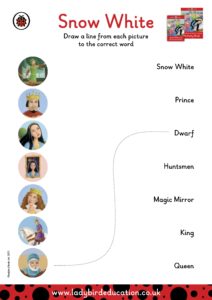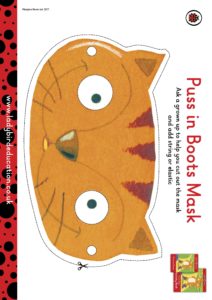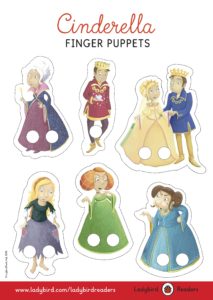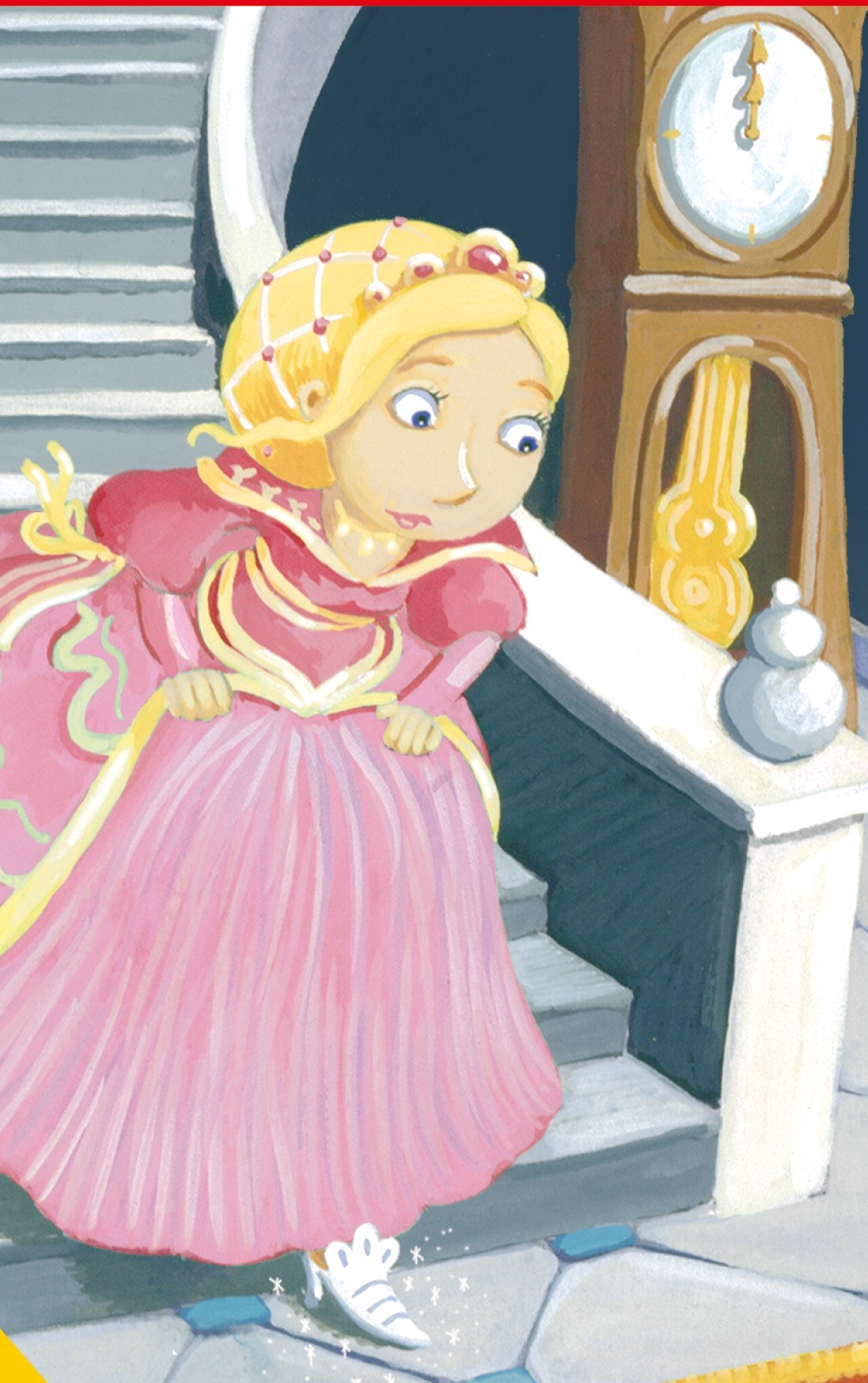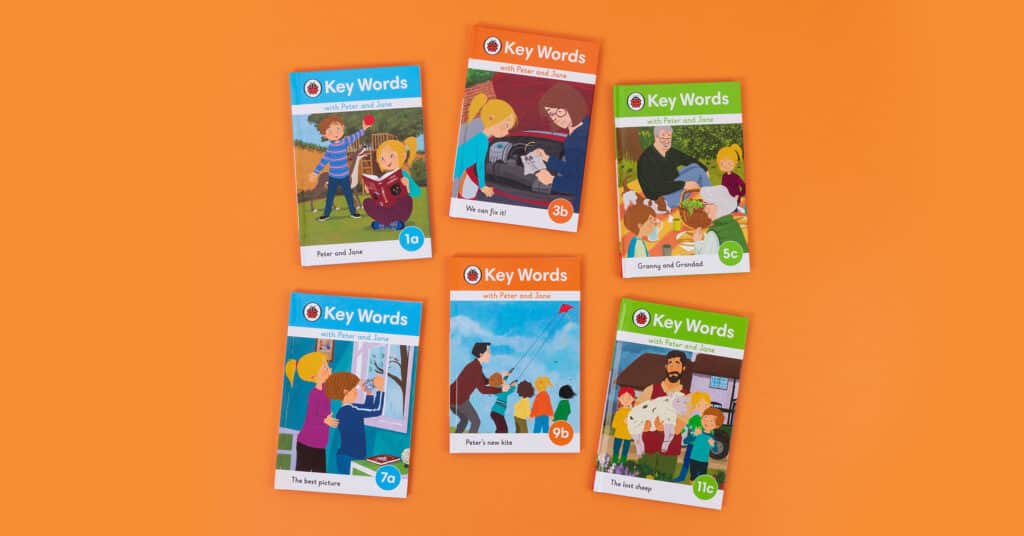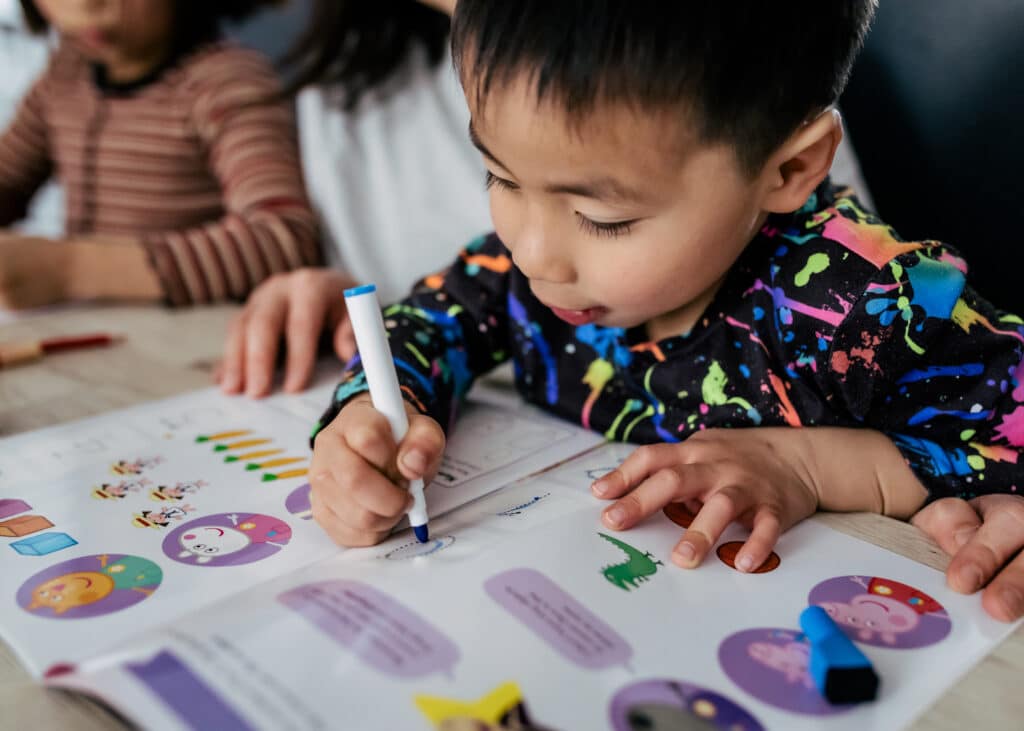The Importance of Fairy Tales in the EFL Classroom
ELT specialist Vanessa Reis Esteves argues the benefits of teaching fairy tales in a classroom setting, to develop children’s emotional intelligence, creativity and critical thinking skills.
“Once upon a time, there was…”. These are the magic words that start many a fairy tale and transport us back in time to our childhoods and the fantastical world of our imaginations. A place where princesses and princes can defeat all the obstacles that cross their paths, including big, scary and dangerous dragons.
Do you remember how happy and excited you felt when someone you loved took the time to read you a fairy tale? Chances are that you probably haven’t read that fairy tale in a while, yet, you would easily be able to retell it in a wink of an eye. This is undeniable proof that fairy tales are memorable and that they continue to live in our minds long after we hear or read the classic phrase: “And they all lived happily ever after.”
Albert Einstein defended that: “If you want your children to be intelligent, read them fairy tales. If you want them to be more intelligent, read them more fairy tales.” Judging by his track record, this is the type of advice that cannot be taken lightly!
Most children will have come into contact with fairy tales in their native language, so these stories can provide them with a safe and familiar context to learn a foreign language in, too. So, when they learn a fairy tale in English, understanding the text becomes less of a problem as they already know the content.
Another of the many benefits of fairy tales is that they develop children’s emotional well-being by teaching them morals in a context that they can understand and easily identify with. They can show them the importance of being kind, supporting friends through hardships as well as the fundamental need to be resilient.
Before we move on to discuss how to develop these concepts in a fairy tale, here are some ideas to help you approach reading and telling children a fairy tale.
How to tell children a fairy tale
When telling a fairy tale, like any story, the storytelling experience is key. Remember to use your voice and body to recreate the mystical atmosphere of the fairy tale. Try playing with volume and pace by pausing and whispering something to gain the children’s attention. Use volume to alert them to approaching danger or to represent a powerful, dangerous or intimidating character that the children should take notice of. Different voices can be used for different characters: try finding a princess voice and a scary voice to represent the protagonist and antagonist in the story and then revert to your normal voice for the narrator or secondary characters. Remember to be realistic – bear in mind that it is difficult to produce more than three different voices at a time and concentrate on the story to tell it naturally and fluently.
Another effective storytelling strategy is to use your body language to involve the children in the story by making gestures to scaffold new language. As the story progresses, encourage the children to repeat those gestures each time they hear the target language in the story. You can also play with space and move around the room to reinforce the atmosphere and meaning of the story. For example, take the well-known fairy tale Puss in Boots, you can stand on the left of the room each time Puss is speaking to a “safe” character like his master; in the centre when he is speaking to an important character like the king; and on the right when he is speaking to the ogre or the villain of the story.
Stand on the left of the room:
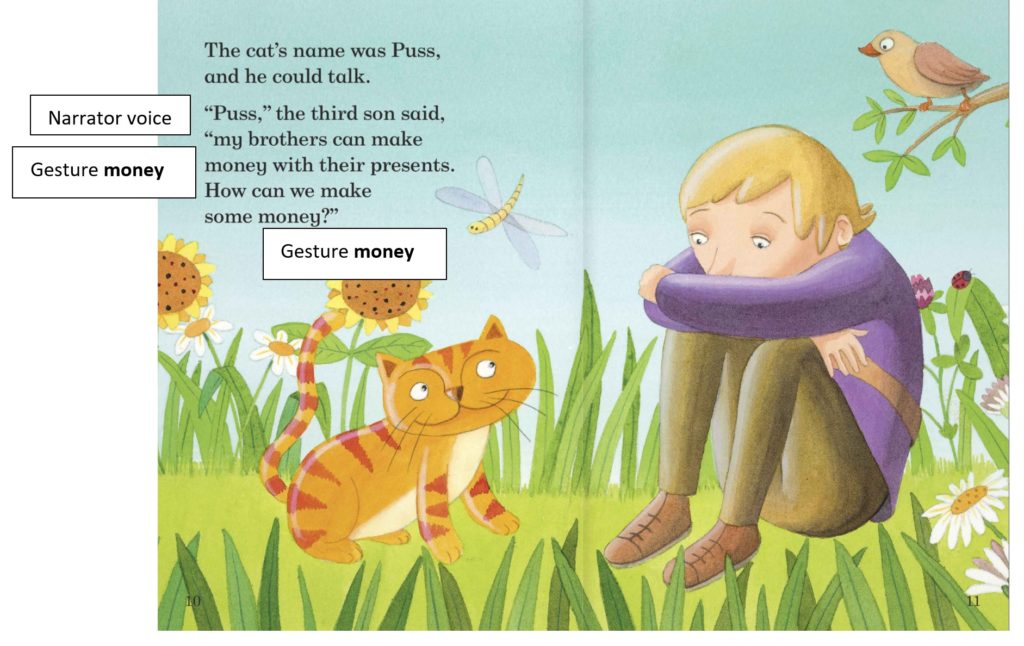
Stand in the centre of the room:
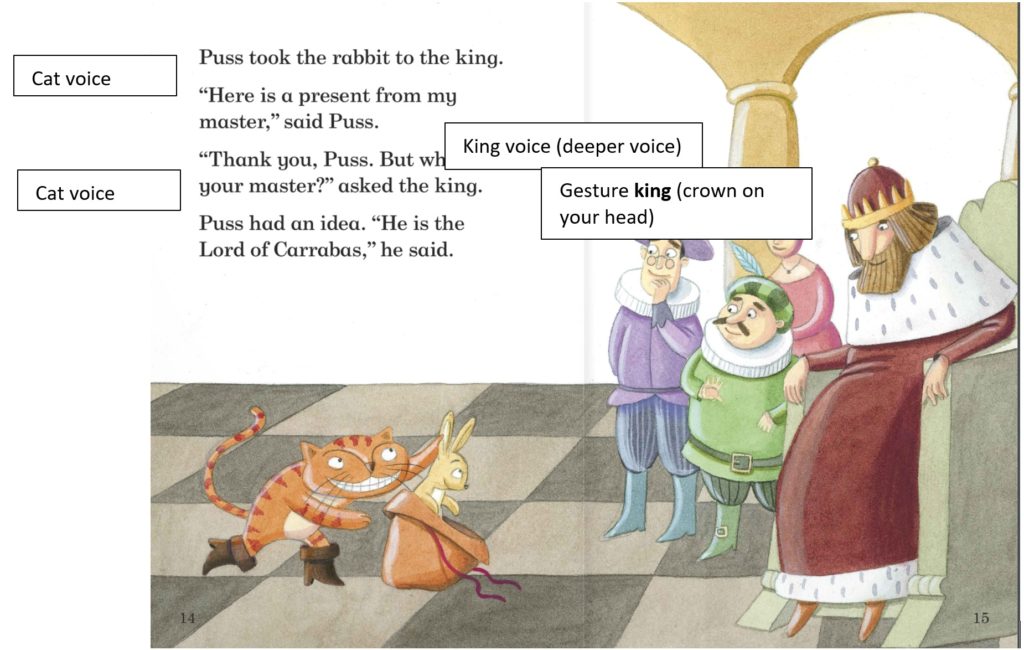
Stand on the right of the room:
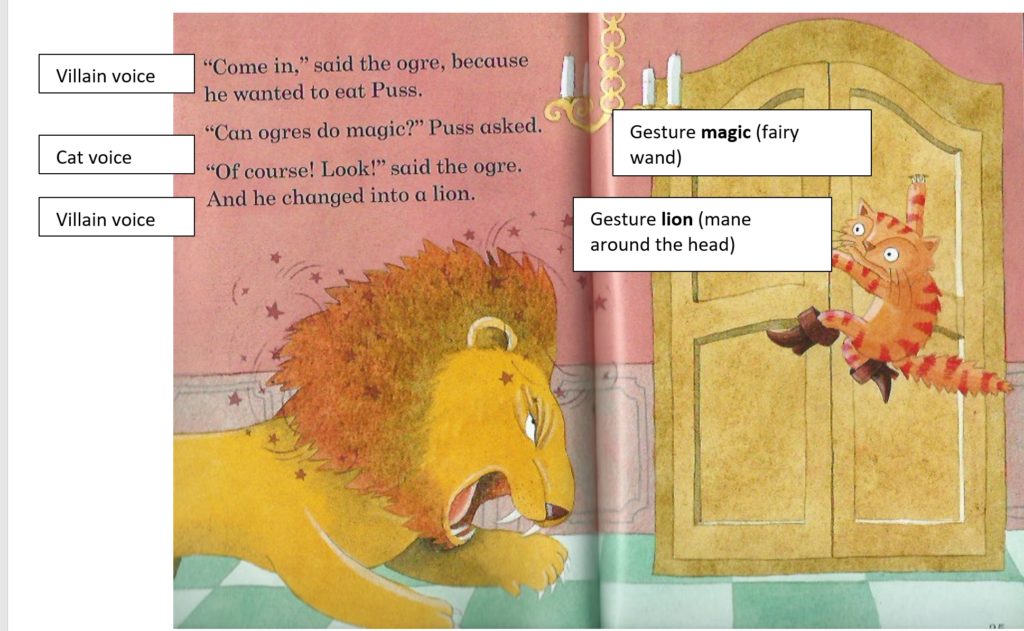
Remember to leave ‘free space’ (a few seconds or lines) between gestures where the children can simply listen to the story to avoid confusion and classroom management problems.
Fairy tale activity ideas
Post-reading activities are a great way to continue to engage children after the story and can be used to develop children’s emotional intelligence, creativity and critical thinking skills. According to Psychologist Daniel Goleman, who specialises in emotional intelligence, emotional intelligence (EI) is the ability to identify, assess and control one’s emotions as well as to understand and manage the emotions of others. (1998). Goleman defends that EI or emotional competencies are not innate talents but rather a learned capacity that must consciously be worked on and developed. This being the case we must develop the following sub-skills with our children: self-awareness, self-regulation, social skills, empathy and motivation.
Post-reading activities for Cinderella
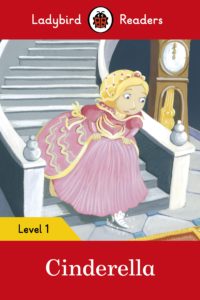 Discussion topics/questions:
Discussion topics/questions:
- How does Cinderella’s step-family treat her? Does she treat them in the same way? Why?
- How does Cinderella overcome her problems?
- Why do the animals help Cinderella?
- What can the fairy godmother do that Cinderella can’t do?
Post-reading group competition:
Build the tallest castle possible with recyclable objects.
Elaborate a list of criteria to determine which is the tallest castle objectively.
Post-reading activities for Jack and the Beanstalk
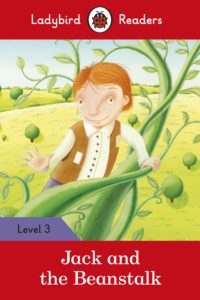 Arts and Crafts:
Arts and Crafts:
Make an ogre origami
Experiment:
Grow a bean and write a science report about the process.
Post-reading activities for Puss in Boots
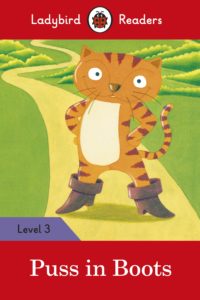 Discussion topics/questions:
Discussion topics/questions:
- What does Puss do to make the king listen to him?
- How does Puss convince the workers to say that they work for the Lord of Carrabas?
- What can Puss do that the 3rd son can’t do?
- What could the Ogre do that the people couldn’t do?
- How does Puss convince the Ogre to change into a mouse?
- What can Puss do that the Ogre can’t do?
Arts and Crafts:
Make a wanted poster for a villain in the story. The poster should include:
- Title: WANTED & an image/drawing of the villain
- Reward
- Last seen
- Clues at the scene of the crime
- Footprint
- The Crime (a brief description)
Post-reading activities for Peter and the Wolf
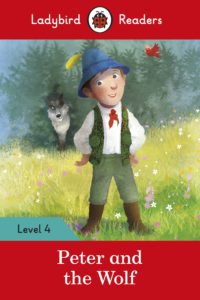 Discussion questions/topics:
Discussion questions/topics:
- Why do the bird and duck get angry with each other? How else could they react?
- Why is Peter’s grandfather angry with him?
- What does Peter teach his grandfather?
- Why does the bird do what Peter tells him to do?
- What can Peter do that the wolf can’t do?
- What is the moral of this story?
Writing:
Write your own fairy tale using the Pixar Structure:
Once upon a time, there was…
Every day, …
One day, …
Because of that, …
Because of that, …
Until finally, …
It should be noted that the children do not possess enough language to discuss these questions in English. Because of this, it is important to adopt a time-out strategy where you speak L1 during the discussion. Slowly introduce one or two new English words that reflect the main points of your discussion and get the children to repeat these words. After the discussion ends, go back to these words and discuss them with the children by asking questions like: How do you say concept in discussion in English? What is the English word for concept in discussion? You can help children structure this new vocabulary by creating a classroom wall dictionary where the children write and illustrate the new words that they are learning. They then have easy access and are constantly reminded of the words they are picking up naturally during storytelling.
So, when all is said and done, does today’s story have a happy fairy tale pedagogical ending? According to Einstein: “When I examine myself and my methods of thought, I come to the conclusion that the gift of fantasy has meant more to me than any talent of abstract, positive thinking.” C.S. Lewis challenges us by saying that: “Some day you will be old enough to start reading fairy tales again.” Today is a fantastic day for you to pick up a fairy tale that you love so that your students can listen and learn happily ever after…
